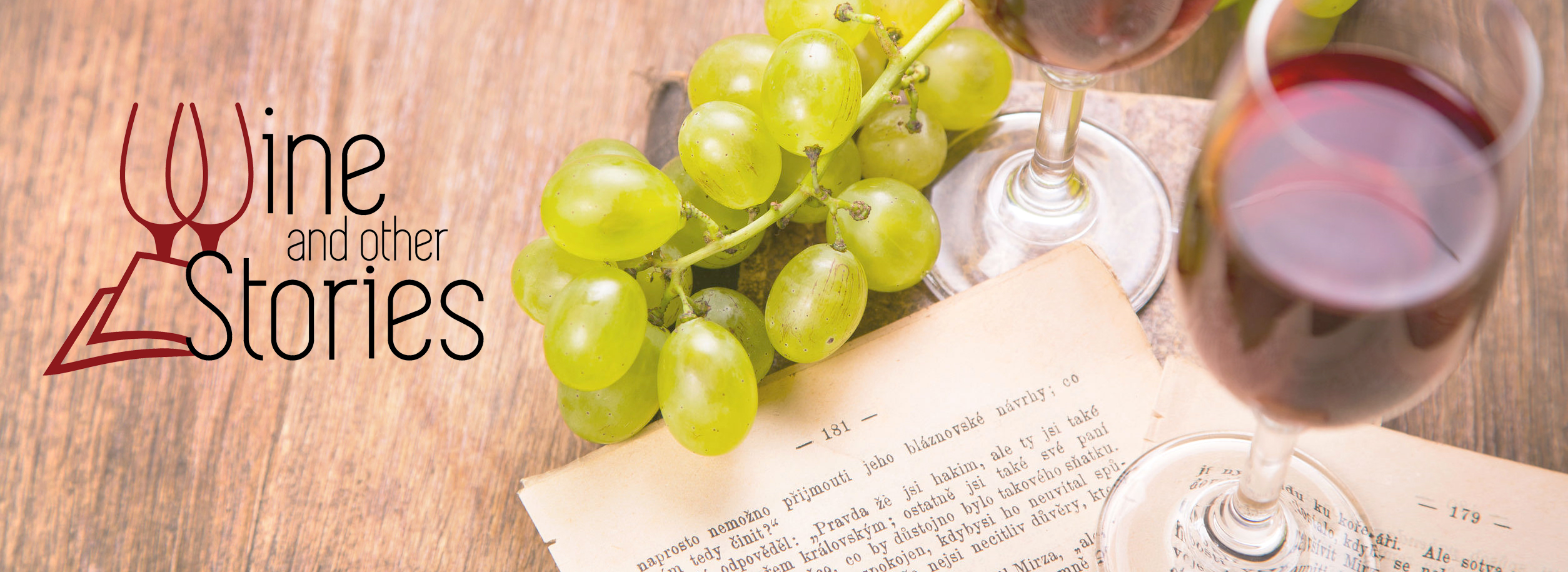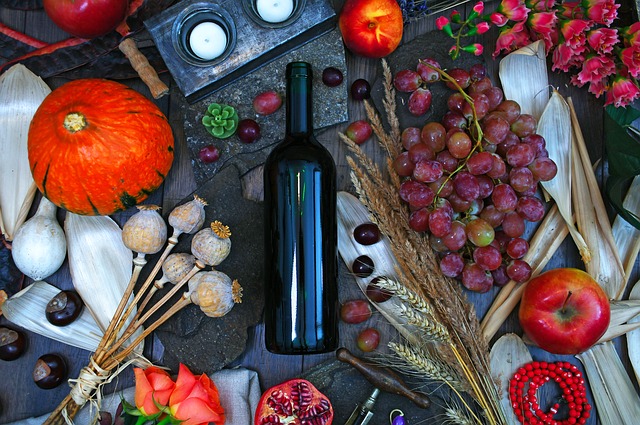What do pinot noir, cabernet franc and mourvedre have in common? They are all spot-on for this season! Here are my three recommendations for red wines for the autumn. Three grapes, three wines, three stories. And some food pairing ideas
Let’s be frank, autumn is the season for red wine! In the hot months of the year you might prefer the freshness of a white, a lively rosé (maybe one from Puglia) or perhaps a light red.
After summer, with temperatures dropping and the days getting shorter, red wine clearly becomes more apt and comfortable. In autumn, few things are more enjoyable than a glass of red in front of the romance of a crackling fireplace. The only improvements to such a scene would be a warm duvet and a good book.
In a previous post, I gave you my recommendations for some autumnal white wines to try this season. It’s finally the turn of those red wine lovers among you. This week, I will present my picks for red wines for the autumn. Three grapes. Three wines. Three great stories. And of course, some food matching advice (hey, I’m Italian). Enjoy!

Pinot Noir: the earthy red
Among black grape varieties, pinot noir has probably the best affinity with autumn. The signature aromas of earth, undergrowth and wild red fruit mirror the seasonal products available this time of the year.
The homeland of pinot noir is Burgundy, in France. However, these days drinking great Burgundy requires a loan. Luckily for the less affluent among us, there are other viable options to consider. In Europe, Alsace in France and Baden in Germany produce some good pinot noirs (the latter calls this variety Spätburgunder). In the New World, regions such as California, different areas of New Zealand, Victoria in Australia and the Walker Bay district in South Africa all make some excellent wines from this grape.

My choice is slightly less obvious. I selected a terrific pinot noir from a country most famous for chocolate. Here’s Selvenen Barrique Pinot Noir by Weingut Fromm. Coming from Malans, close to the eastern border of Switzerland. I would love to pair it with game meat – for example, pot-roasted pheasant with chestnuts.
Weingut Fromm - Selvenen Barrique Pinot Noir, 2010

 Country: Switzerland
Region/appellation: Graubunden - Malanser
Wine style: Dry red - Light and perfumed
Grape(s): pinot noir
Average price: £33
Country: Switzerland
Region/appellation: Graubunden - Malanser
Wine style: Dry red - Light and perfumed
Grape(s): pinot noir
Average price: £33
Wine has flowed through the veins of the Fromm family for four generations. Today the current winemaker is Georg Fromm. He started pressing wine at the age of 16. Two years later, he took over the reins of the winery operations following the premature death of his father.
Georg Fromm owns 4.5 hectares of vineyard in Malans, located in the canton of Graubünden – on the eastern edge of Switzerland. He produces wines using a holistic and environmentally friendly approach. Georg’s reds are made mainly from pinot noir. This “Selvenen” is no exception and could rightly be mistaken for a Premier Cru from Burgundy… just with a bit more punch!
Tasting notes
(tasted on: 13-Mar-2019)
The wine has a rich ruby hue, with rims verging on garnet. Pale intensity in colour. To the nose, this pinot exhibits outstanding intensity and complexity of flavours. Rich and seductive, spicy and fragrant. Notes of ripe red and black cherry, strawberry compote and red plums. The fruit core is enveloped by a wide array of penetrating spices. A marked earthy undertone mixes with meaty and peppery nuances. Clove, cured meat, dried thyme, bay leaves, liquorice root, autumn leaves, juniper and whiffs of toast and butterscotch. The multi-layered notes of this red will stun you!
On the palate, the intense ripeness and concentration match those perceived on the nose. The prelude is powerful and captivating. A touch of dried flowers and lovely green notes emerge in the mid-palate: mediterranean shrubs, dried herbs and liquorice root. Medium+ in body, its mouthfeel is rich yet elegant, thanks to a perfect high acidity. The tannins are medium in level, fine-grained and superbly refined – pure silk on the palate. Hints of meat and tobacco in the long and classy finish.
Wine and other Stories rating: 9.0/10
Cabernet Franc: Slovenian gem
While cabernet sauvignon is a grape for the winter, its parent cabernet franc is just perfect for the fall. Lighter in body and more stalky and floral than its progeny cabernet sauvignon, cabernet franc’s aromatic profile is characterised by red fruit, green notes (bell pepper), violet and primrose.
In the Bordeaux area, cabernet franc is used almost exclusively in blends. On its own, you can find the grape in the French region of Loire, in some spots of central Italy (usually a riper fashion that is more similar to cabernet sauvignon), and in patches of New Zealand, Australia and South Africa.
My autumnal choice is the Selection Cabernet Franc from Guerlila. This Sloveninan winery is one of my favourites right now and I tend to stockpile their releases as soon as I can get a hold of them. The pure redcurrant and flowery nuances of this wine make it perfect for either a mild spring or autumn. Food companion: pork tenderloin in a red fruit sauce.

Guerila - Selection Cabernet Franc, 2017

 Country: Slovenia
Region/appellation: Primorski
Wine style: Dry red - Light and perfumed
Grape(s): cabernet franc
Average price: £23
Country: Slovenia
Region/appellation: Primorski
Wine style: Dry red - Light and perfumed
Grape(s): cabernet franc
Average price: £23
Zmago Petrič leads this small winery located in the Vipava valley, in the midst of the Slovenian Littoral – stretching between the Mediterranean and the eastern Alps. Petrič takes environmental concerns very seriously. Since Guerila’s creation in 2005, Petrič has been following organic and biodynamic principles. His focus is on respecting the territory. Local grape varieties such as zelen and pinela are favoured, along with barbera and cabernet franc. Petrič doesn’t use chemicals during winemaking, he prefers wild yeasts and makes minimal use of sulphur dioxide. Furthermore, all his wines are unfined and unfiltered. Petrič’s wines can be defined as “natural” – but above all they are alive and delicious!
Tasting notes
(tasted on: 27-Sep-2019)
The wine has a ruby shade in the glass, with a tinge of purple (a sign of its young age!) and is medium in colour intensity. To the nose, it suddenly reveals crunchy and juicy redcurrant notes that is so pleasing that I can only describe it as the most perfect redcurrant in the world. Aromas of red cherry and raspberry complete the fruity side. Perfumed undertones of violets, lilies and earth overlap with an alluring graphite minerality.
On the palate, the wine is medium in body with a zesty high acidity. The attack is pervaded by crunchy red fruit notes. Perfumed notes of violet, lavender and sage stumble on the mid-palate, along with a subtle hint of bell pepper. The tannins are between medium and medium+, silky and refined in character. Pronounced in intensity of flavours, with a finish that is satisfying because everything comes together magnificently. A pencil shave minerality lingers in the aftertaste. Exquisite!
Wine and other Stories rating: 9.1/10
Mourvedre: elegant spiciness
Mourvedre is a tricky grape variety, and often overlooked. It has a tendency to reduction (generating off-putting odours of rotten eggs) and it can have a strong gamey/animal scent that is not to everyone’s taste. However, when treated with care and expert hands, mourvedre is a variety that truly shines. Ripe red and black fruit combine with distinctive meaty and dried herbs flavours. Mourvedre also has powerful tannins which mellow after a few years of bottling.
It’s not common to find a varietal mourvedre. This grape is commonly blended in the South of France (grenache, cinsault, syrah, carignan are among its favourite blending partners) or in Australia (in the so-called GSM blends).

Probably the most famous wine region for monocultural mourvedre is Bandol in Provence. I picked a wine from the close-by Alpilles region, an area that both geographically and stylistically sits between the Southern Rhone and Provence. If you have a nice plate of charcuterie and some good friends to chat with, this wine makes an ideal partner…
Château d'Estoublon - Estoublon Mono Cepage Mourvedre, 2014

 Country: France
Region/appellation: Alpilles - IGP Alpilles
Wine style: Dry red - Rich and Intense
Grape(s): Mourvedre
Average price: £29
Country: France
Region/appellation: Alpilles - IGP Alpilles
Wine style: Dry red - Rich and Intense
Grape(s): Mourvedre
Average price: £29
As soon as you lay your eyes on Château d’Estoublon, you would think the estate is the wedding venue of your dreams. That is, if you want to get married, like France and have a healthy income!
Situated between the villages of Maussane and Fontvieille, Château d’Estoublon sits in the middle of 200 hectares of manicured grounds and verdant forest in the pastoral landscape of the Vallée des Baux. This Southern France district is in the heart of the Alpilles which inspired artists of the calibre of Van Gogh, Cézanne and Picasso – and for a good reason.
The Estoublon family preserves a long-established tradition of making olive oil and wine in a land kissed by the sun and natural beauties. Grapes and olives are cultivated on the estate, respecting organic farming and exclusively following manual and mechanical manufacturing processes.
Tasting notes
(tasted on: 30-Jun-2019)
The wine appears a perfect ruby with medium intensity in the glass. On the nose, it unfolds with a pronounced concentration of flavours. Multi-layered, fragrant with a charming spiciness. Crunchy and refined fruit notes mark the attack. Mostly red cherry, red plum, raspberry conserve. To a lesser extent, suggestions of black fruit (blackberry, black plums). All displaying a perfect ripeness level. An enticing spicy component wears the fruity core like a perfectly tailored suit. Nuances of earth, undergrowth, myrtle, thyme, dried bay leaves, toast, smoked wood – along with an interesting furry meatiness – come through as you inhale.
On the palate, the wine is medium in body with a juicy and crunchy red fruit attack. Soon after, a lovely toastiness, smoked wood, animal fur and dried garrigue kick in. Earth undertones and savoury accents on the mid-palate combine with suggestions of leather and tar. Medium to high level of acidity and tannins. The latter are crisp and fleshy and simultaneously supple and elegant. This wine is really complex. It dances and evolves in your mouth as you savour it. A long, powerful and tense finish is another sign of its greatness.
Wine and other Stories rating: 9.1/10
I hope you enjoyed my personal selection of red wines for the autumn. It was hard to choose only three options. I’m sure you could add at least a dozen of other interesting alternatives. What’s your favourite red wine for the autumn? Can you suggest any food pairings? Let me know your preferences in the comment section below. I’m always on the lookout for new wines and recipes to try!


Comments · 1